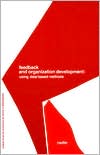

 |

|

The average rating for Feedback and Organization Development: Using Data-Based Methods based on 2 reviews is 4 stars.
Review # 1 was written on 2012-07-09 00:00:00 Bjarne Dyrlie Bjarne DyrlieREAD JUL 2012 Excellent resource from Addison-Wesley's series on OD. Nice reminder that feedback can influence organizational change, generates organizational energy (positive and negative), is more effective when used in conjunction with other OD interventions, and it is important to give attention to the feedback design. |
Review # 2 was written on 2012-02-24 00:00:00 Juan M Castro Tapia Juan M Castro TapiaA colleague gave me this book after a business training session in June 2000. Although the title was intriguing, the book did not live up to its promise. The true focus of the book is the question of Process Innovation. Information technology is treated as a tool to help the innovation process. There is only one chapter specifically devoted to IT. Davenport does this to help people get away from the idea that if it is on a computer, it must be good. Many projects that were otherwise well-designed failed due to over-emphasis of the IT component when it was not necessary. He also reminds the readers that poor design is poor design, whether on a computer or not. I actually agree with this sentiment, but I had hoped this book would be future-looking like Burrus' Technotrends also from 1993. It would also be interesting to read an update to this book, where Davenport acknowledges that many of the technologies he discussed in 1993 are in regular use today (conferencing, e-mail, networks, etc.). That said, there were many useful comments about process innovation. Although the book is aimed at technology and business leaders within an organization, I found many comments applicable to my life. The basic steps of process innovation, according to Davenport, are 1. Identify processes 2. Identify change levers 3. Develop a process vision 4. Understand existing processes 5. Design and prototype the new process The book then discusses many aspects of these steps, with some emphasis on the fact that information technology can be a valuable tool throughout this process. The book also talks about many concepts and tools that have nothing to do with information technology. If teams are to be successful, the team must be an integral part of one's job. Spending one day a week on team-related activities is not enough to make the team effective. Davenport suggests that at least 50% of each member's time should be devoted to teamwork; otherwise the team will not succeed. Davenport cautions against developing highly detailed models of work processes. Too much time and monetary investment might bias people to staying with the modeled behavior. It takes too much time to build these models in the first place, and work processes are under continual flux. High-level description of the work processes does not require the detailed models. For example, the PCRP model probably has too much detail to be worthwhile to management. Many of these reasons apply to developing models of chemical / physical processes as well. |
CAN'T FIND WHAT YOU'RE LOOKING FOR? CLICK HERE!!!